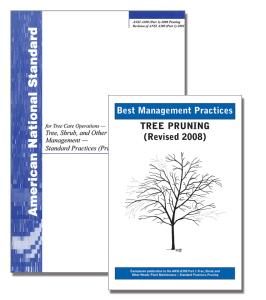
Why is it important to require your tree service to adhere to the ANSI A300 Pruning Standards?
Companies which agree to adhere to ANSI A300 Pruning Standards are contractually bound to follow the standards. If a tree is damaged because the standards are not followed, a company could be held liable in a court of law. American National Standards are routinely recognized as an authority in U.S. court systems.
ANSI A300 is the American National Standard for Tree Care Operations. It is a voluntary standard that has been developed by tree care industry professionals and is accepted by the green industry as the authority on tree care maintenance operations. ANSI A300 is not a law, it is a voluntary standard that you should require your arborist to follow. You will benefit by eliminating harmful practices. Here are the most common injurious practices that you can prevent:
- Using climbing spikes on trees to be pruned (Causes severe injury to the cambium).
- Topping, which is the indiscriminate removal of limbs.
- Flush cutting, which damages vital trunk tissue needed to seal wounds.
- Over thinning, which reduces the trees ability to produce sugars.
- Wound painting and cavity filling which can trap moisture and lead to decay.
All of these practices can lead to the premature decline and death of beautiful and valuable trees. These standards were written to benefit tree owners and arborists. Standards assist you in comparing prices, ensuring that you will receive quality tree care.
